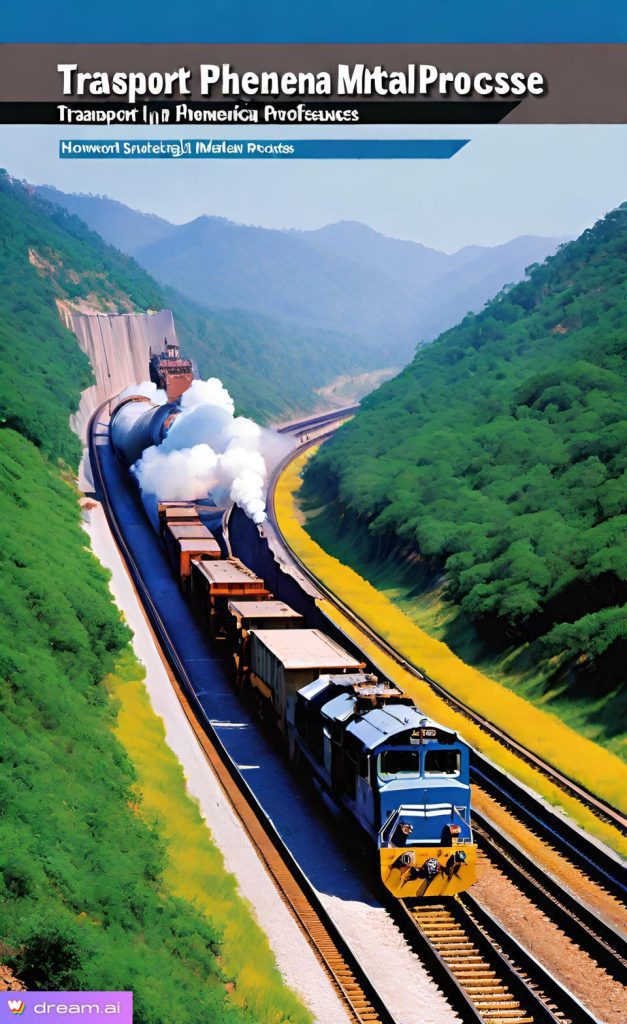Introduction to Transport Phenomena in Metallurgical Processes Homework Help
Are you struggling with your Transport Phenomena in Metallurgical Processes homework? Understanding how momentum, heat, and mass transfer affect metallurgical processes is crucial for students and professionals in materials science and engineering. This subject is fundamental in optimizing metallurgical operations, improving efficiency, and ensuring quality in metal production.
This detailed guide will cover:
- The fundamentals of transport phenomena in metallurgy
- Key concepts: momentum, heat, and mass transfer
- Applications in metallurgical processes
- Common homework problems and solutions
- External resources for additional learning
By the end of this article, you’ll have a strong grasp of transport phenomena concepts and the tools to tackle your assignments effectively.

Understanding Transport Phenomena in Metallurgical Processes
What Are Transport Phenomena?
Transport phenomena involve the study of momentum, heat, and mass transfer. These concepts are essential in engineering, particularly in metallurgy, where controlling these variables leads to efficient material processing and improved product quality.
- Momentum Transfer (Fluid Mechanics): Governs how gases and liquids behave during metal processing.
- Heat Transfer: Essential for melting, solidification, and thermal treatments in metallurgy.
- Mass Transfer: Deals with the movement of atoms and molecules, influencing processes like diffusion and phase transformations.
For a deeper understanding of transport phenomena, check out this resource: MIT OpenCourseWare – Transport Phenomena.
Key Concepts in Transport Phenomena for Metallurgy
Momentum Transfer in Metallurgical Processes
Momentum transfer is primarily studied through fluid mechanics and is crucial in:
- Gas injection in blast furnaces: The behavior of gases influences reduction reactions.
- Molten metal flow: The movement of liquid metals affects casting and refining operations.
- Slag-metal interactions: Proper fluid flow control leads to better separation of impurities.
Heat Transfer in Metallurgical Processes
Heat transfer occurs in three modes:
- Conduction: Heat flow through solid metals (e.g., heat treatment of steel).
- Convection: Heat transfer in molten metal baths (e.g., aluminum refining).
- Radiation: Crucial in high-temperature processes like electric arc furnaces.
An excellent resource for heat transfer in metallurgy: ASM International – Heat Transfer.
Mass Transfer in Metallurgical Processes
Mass transfer governs the movement of elements within metals and slags. Important applications include:
- Diffusion-controlled reactions: Essential in carburization and oxidation.
- Leaching and refining: Used in hydrometallurgy to extract pure metals.
- Gas absorption in molten metals: Affects steelmaking and non-ferrous metallurgy.
For more on mass transfer, refer to: Elsevier – Mass Transfer in Metallurgy.
Applications of Transport Phenomena in Metallurgical Processes
Understanding transport phenomena helps in optimizing:
1. Iron and Steelmaking
- Blast furnace operations depend on gas flow and heat transfer.
- Continuous casting involves precise temperature control.
2. Non-Ferrous Metallurgy
- Aluminum and copper production use controlled mass and heat transfer.
- Electrorefining requires effective ion transport in electrolytes.
3. Welding and Joining
- Heat transfer and fluid flow affect weld pool formation.
- Mass transfer controls diffusion bonding processes.
4. Powder Metallurgy
- Sintering relies on diffusion and heat transfer to form strong materials.
For detailed applications, explore: Springer – Transport Phenomena in Materials Processing.
Common Homework Problems and Solutions
Problem 1: Heat Transfer in a Metal Rod
Question: A steel rod is heated at one end to 1000°C. Calculate the temperature distribution along its length. Solution Approach:
- Use Fourier’s law of heat conduction.
- Apply boundary conditions for steady-state heat flow.
Problem 2: Fluid Flow in Metallurgical Reactors
Question: Determine the velocity profile of molten metal in a ladle. Solution Approach:
- Solve Navier-Stokes equations.
- Consider viscosity and turbulence effects.
Problem 3: Mass Diffusion in Solidification
Question: Estimate the diffusion coefficient of carbon in iron at high temperatures. Solution Approach:
- Use Fick’s laws of diffusion.
- Apply experimental data for validation.
External Resources for Transport Phenomena in Metallurgy Homework Help
For further learning and problem-solving strategies, consider these sources:
- NPTEL Online Courses: https://nptel.ac.in/courses/112/107/112107298/
- Books on Transport Phenomena: Transport Phenomena by Bird, Stewart, and Lightfoot
- YouTube Tutorials: https://www.youtube.com/results?search_query=transport+phenomena+in+metallurgy
- Research Articles: Available on Google Scholar
Conclusion: Get the Best Transport Phenomena in Metallurgical Processes Homework Help
Mastering Transport Phenomena in Metallurgical Processes is essential for excelling in metallurgy and materials engineering. Whether you need help with fluid dynamics, heat transfer, or mass diffusion, understanding these principles will help you tackle complex homework problems. Utilize online resources, practice numerical problems, and seek guidance from experts to enhance your learning.
If you need additional assistance, explore textbooks, online courses, and expert tutors who specialize in transport phenomena.


